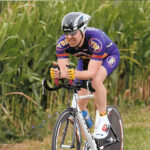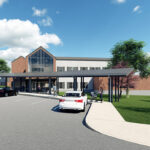In 2018, State Street was the most dangerous street in the nation. That’s not an exaggeration – that’s statistics. That’s a death rate of 88.64 deaths per 100 million vehicle miles traveled, nearly four times as many as New York City’s infamous “Boulevard of Death” in the 1990s.
The reasons for State Street’s dangerous nature are no mystery to those familiar with road safety. In fact, for those familiar with Strong Towns’ philosophy, State Street is a classic example of a “stroad” – a hybridization of a street and a road which fails to accomplish the primary purpose of either, resulting in an inefficient, expensive and incredibly dangerous thoroughfare.
For those unfamiliar with Strong Towns’ body of work, the term “stroad” may be confusing, as well as what we mean by distinguishing “street” and “road” as separate terms. In a nutshell: a road is a connection between destinations, something a step down from a highway. It has wide lanes, high speeds, and, most importantly, few “points of conflict” where a driver may have to stop unexpectedly. It does not have businesses alongside it, or housing, or parallel parking spaces where cars may pull in and out constantly, or foot traffic where pedestrians will routinely cross. It certainly does not have school zones.
These points of interest are the provinces of streets, which are low-speed places with narrow lanes, narrow streets, and destinations on either side. Streets are places where people are meant to live, work and play. They are lined with on-street parking, residences, businesses, shops, libraries, parks, and other attractions. Pedestrians cross regularly, cyclists intermix with the traffic, and children go to schools and playgrounds without fear of cars.
Stroads combine the worst of these attributes. They have wide, highway-style lanes which encourage highway-style speeds. They have a large number of lanes, frequently without so much as a pedestrian median, forcing pedestrians to walk – or often sprint – long distances in order to cross from one side or another. (This is, incidentally, particularly difficult for people with limited mobility, such as elderly individuals, wheelchair and cane users, and so on.) But they also have a number of reasons for pedestrians to cross, because they are lined with parking spaces, parking lots and destinations.
In addition to issues for those outside a car, stroads involve a lot of conflict between vehicles, with frequent intersections, parking spaces and lots (again), and so on. All of this causes vehicles to potentially stop frequently. This results in a nightmare scenario where drivers, driving the speed for the road that ‘feels safe’ without checking their speedometer, reach high speeds due to the wide lanes, only to have to come to a screeching halt because a child ran out into the street. For cars, this is dangerous. For vulnerable road users like pedestrians and cyclists, this is deadly.
State Street is a very clear example of a stroad in action. As you can see above, it has four 12-foot travel lanes, a 12-foot center turn lane, and two 8-foot parking lanes. There is no pedestrian median. There are few pedestrian lights. There are homes, businesses and two school zones on either side. And as a result, there are far too many deaths on State Street each year. And it’s time to do something. It’s time to make State Street a real street. And that means making some changes.
The first and most crucial change necessary to make State Street truly safe is to narrow the lanes. There is an old school of thought amongst road designers which says that wider lanes are safer. It seems intuitive. Wider lanes keep cars further apart, making collisions less likely and allowing more room for error. And when driving along roads, it certainly feels intuitive, doesn’t it? You feel safer driving in wider lanes than narrower lanes. It’s less stressful. You don’t have to pay as much attention. You can speed up.
Of course, inattentiveness and speed are not combinations that tend to increase road safety. Which is the factor that the “bigger is better” line of thinking tends to forget — that highway-sized lanes result in highway-sized speeds. On a highway, that’s well and good. On a seven-lane residential road running through two school zones, it’s not. The evidence supports this — as per the WRI Ross Center for Sustainable Cities Health and Road Safety, city roads with lanes wider than 11.8 feet result in much higher fatalities than narrower ones. No number of speed limit signs can fix this. People will drive the speed that the road allows, and no signs or paint will compete with simple physics.
How can we do better? Well, if lanes wider than 11.8 feet are dangerous, what about narrower ones? Our friends at the WRI have data on this, too — specifically, they show that city streets with lanes between 10 and 10.5 feet have the lowest fatality rates. Your widest SUVs in the US tend towards around 7 feet wide. A fire truck is around 8 feet wide. Ten-foot lanes leave plenty of room for even wide vehicles to travel at safe distances, but little room to reach unsafe speeds. This is exactly what State Street needs.
Narrowing State Street’s lanes alone would do a lot to help make it safer. And the extra 10 feet made available by narrowing State Street’s travel and turn lane could easily be used for other improvements, such as a bike lane, a bus lane, or wider sidewalks, all things we’d love to see. But does State Street actually even need to have five (non-parking) lanes in the first place? The analysis of renowned city planner Jeff Speck would conclude that it doesn’t. Granting State Street a generous figure of 12,000 cars per day, more than PennDOT’s estimates for actual traffic volume on State Street, there is no need for more than three travel lanes to handle the volume of traffic: one lane each way and a turn lane. Other cities with comparable roads have done it, with no significant change in commute times. And by removing these two lanes, we dramatically reduce the distance pedestrians have to cross in order to cross State Street – making it substantially safer.
And combining both of these improvements would result in no less than 30 feet of now free space on State Street to do, well, anything else. This is a tremendous amount of room. This is enough room to put a parking-protected two-way bike lane on each side of State Street, with a three-foot curb between the bike lane and parking, an additional three-foot door buffer for parked cars, and still have a full two feet left over to widen the gutter or sidewalk, or to make each parking lane 9 feet instead of 8 (as pictured). That’s enough room to have a one-way parking-protected bike lane on each side with the same other amenities and widen the sidewalks by two feet. That’s enough room to keep the parking the same (plus a three-foot door buffer), add a two-way bike lane on each side, and widen the sidewalk by one foot on each side. That’s enough room to… well, you get the idea. There’s a lot which could be done with the space these changes would free up, and we’d probably support most of them, because as long as State Street is made narrower, it will be made safer.
But we are big fans of bike lanes around here, so we’ll take a moment here to argue for their inclusion in at least some form. At the core of our reasoning is that we like bikes because they’re accessible to a lot of people who cars don’t work for. They’re cheaper to buy and maintain (in fact, local charity Recycle Bicycle, for which several of our members volunteer, helps provide Harrisburg residents with bicycles and bicycle maintenance free of charge.) Even the most luxurious of high-end e-bikes usually cost less than the cheapest of cars.
Bike lanes also benefit many people with disabilities as well, despite the common misconception to the contrary. While some disabilities are best accommodated by car usage, there are a number of disabilities which interfere with driving but permit cycling, including partial vision impairments, epilepsy, sensory processing issues, and so on. Meanwhile, many mobility issues still permit cycling; for example, a Transport for London survey found in 2019 that 70% of disabled individuals living in London were able to cycle. Furthermore, as people age, cycling often remains an option long past the point where reflexes and vision have deteriorated sufficiently to make driving a car, at best, a truly terrible idea; indeed, robust cycling infrastructure often permits people to remain active later in life and to age in place with more independence. (Wheelchairs and mobility scooters, incidentally, can also use bike lanes freely, something which is often sadly needed where sidewalk maintenance is lacking.)
Age can also be a limiting factor in driving in other ways, too; namely, for those under the age of 16. Kids in car-dependent areas often rely on their parents to get them to and from places, something which can stifle the social lives of children whose parents aren’t available to do so and eat into the busy schedules of working parents who can. But even more than that, it’s worth remembering that State Street is the location of two schools, including Cougar Academy, and that Harrisburg School District is unfortunately known to have attendance issues. And one of the main causes of those issues? Unreliable transportation. The ability for a student to cycle themself to school can make a real difference.
All of this is without even getting into the environmental and health benefits of cycling, which are well known enough we hardly need to get into them here. And all of this makes bikes an excellent transportation option for anyone who lives within cycling range of most of their destination, a radius of 10 to 15 miles. (At its widest, Harrisburg is about 6 miles in diameter.)
Due to its location, State Street is a prime location for bicycle commuters, but its dangerous nature keeps many of those who have alternate options from cycling along it. Those who choose to cycle along State Street anyway – or who don’t have the luxury not to – are at a very real risk of becoming another State Street statistic. We know these people exist. We’ve met them. Some of our members are them. It’s simply not true that no one cycles along State Street, though it is true that far fewer people cycle along State Street now than likely would if a bike lane were added, just as more people tend to cross a river when there is a bridge than when they have to swim across it.
All of which is to say: a bike lane is not strictly necessary to make State Street safe. But the essential safety improvements to State Street will make room for one anyway, so we think it would be a very good idea.
Ultimately, we will support any changes which make State Street into a true street, one which truly prioritizes the safety of its residents and vulnerable road users. And now that Harrisburg finally has a City Engineer again, we strongly believe it’s time to act. Time is wasting, and lives are at stake.
Strong HBG is a chapter of Strong Towns, strongtowns.org.







